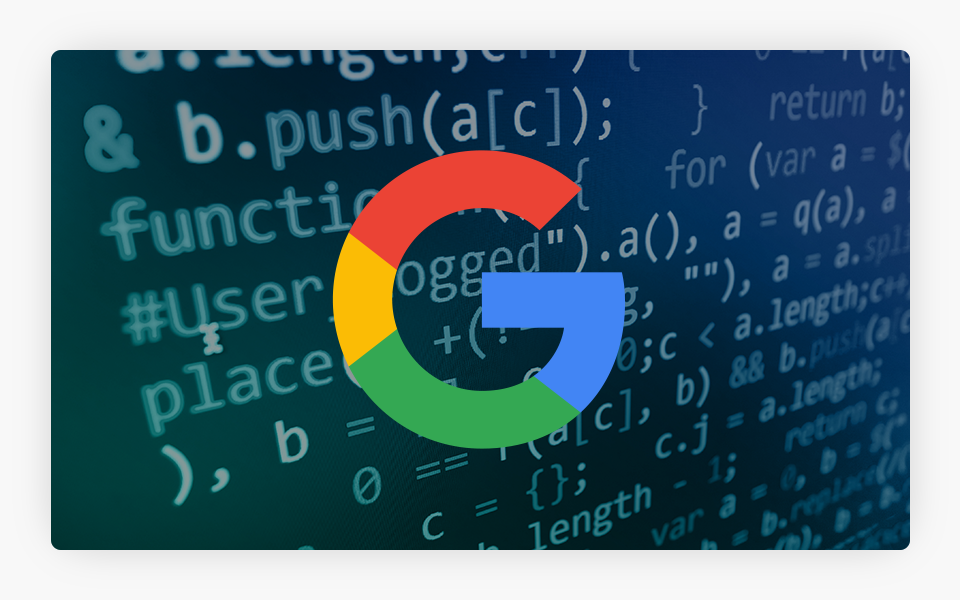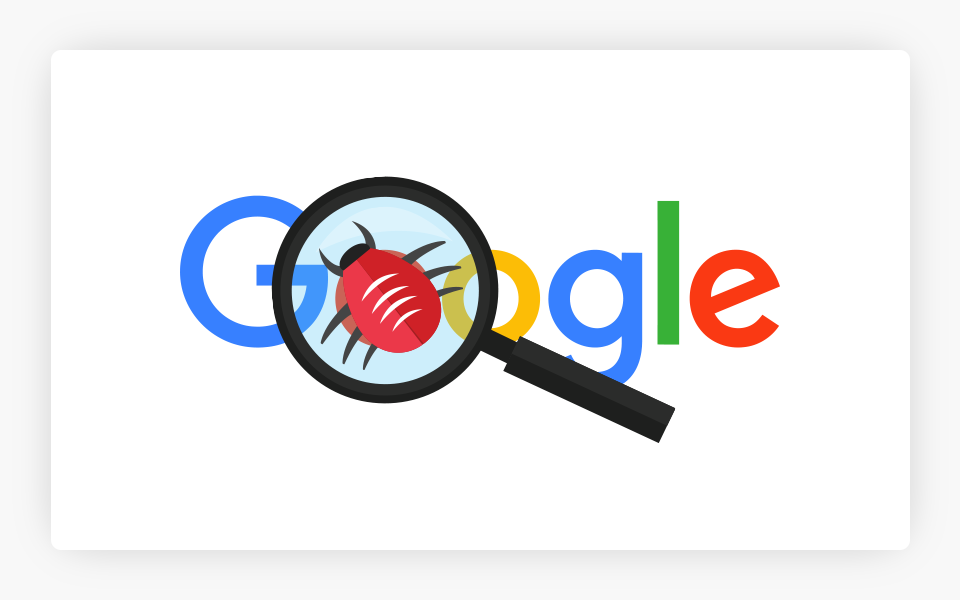We can’t send you updates from Justia Onward without your email.
Unsubscribe at any time.
Throughout 2020, we saw a remarkable amount of changes that affected search engine optimization. In this blog post, we will round up some of the most relevant stories in SEO's constantly evolving world. We can certainly predict that 2021 is coming stronger than ever, so in this post, we elaborate on our take for the coming year too.
The year has come and gone, and 2020 has been tumultuous, to say the least. COVID-19, Presidential elections, and disinformation campaigns have in certain ways affected Google’s core algorithm updates, especially when it comes to presenting correct medical and political information. Google removed many disinformation videos from its search results and from being hosted on YouTube. Google also introduced Core Web Vitals for users’ web experience and the new Google Analytics 4, as well as having some crawling and indexing issues. These are just a few of the stories that shaped search and SEO during the year.
With so many shifts in the Google search landscape, as it evolves toward achieving the ultimate user experience and intent, and providing the user with the best content, it has become mandatory to stay in the loop with the most recent updates and information so as not to lose visibility on the search engine result pages. In this blog post, we take a look back and recap some of the biggest SEO stories from 2020.
Google Algorithm and Search Ranking Updates

Google tweaks and updates its algorithm on an almost continuous basis, and 2020 was not an exception. Additionally, Google continued with its 2019 trend of announcing its major core updates, such as those that happened in January, May, and December.
February Unconfirmed Update. Starting on February 7, the SEO community was abuzz with chatter about a possible algorithm update, in addition to the search results page change of adding some additional links for filtering the results within the organic results. Although Google stated that they “do updates all the time,” they did not confirm this one. This unconfirmed update happened worldwide and affected a wide variety of industries, and in particular ecommerce websites. A week later, it appeared that Google had undone any changes that it had made to the algorithm, so some have speculated that this was a test.
May Core Update. Danny Sullivan announced the second core update of the year on May 4. This update seemed broader than other core updates and affected many sites more strongly than other updates. It looked like websites with quality link issues saw drops in traffic, while sites with quality links saw an increase in traffic. Google may have tweaked the update during the last week of May, since many sites that went through fluctuations with this update saw movement again during that week.
“The Federal Update.” Around June 23, the SEO community noticed what may have been an unconfirmed Google update. Many .gov sites saw a ranking boost. It appears that Google rewarded these kinds of sites because of their authority. Authority is part of the E-A-T (Expertise – Authoritativeness – Trustworthiness) standard that Google introduced back in 2018 for its rater’s guidelines.
Passage Indexing. On October 15th, during the “Search On” live stream, Google announced its “passage indexing” update. Google mentioned that it will index and rank passages within a website’s page to improve search query results. While Google called it “passage indexing,” it is not “indexing,” but instead it has more to do with ranking the passage’s information from a page that has been indexed. As of December 22, Google had confirmed that “passage indexing” was not yet live.
The New Spelling Algorithm. During the same “Search On” event, Google said that it has a new spelling algorithm that improves its ability to understand misspellings better. According to Google, the algorithm runs in under three milliseconds after each search and promises that it will offer even better suggestions for misspelled words.
December Core Update. On December 3, Google announced that it was rolling out the third core update of 2020. While the impact of this update is still being assessed, some have suggested that Google is paying more attention to the page content structure, and in particular to the headings within a page. Of course, writing high quality, original content that is well organized for the reader is always a good idea. This update seems to reinforce that.
COVID-19 and SEO

Notably, 2020 was marked by the COVID-19 pandemic, and this reflected dramatically in the SEO world. Since users need to stay home, study from home, work from home, and generally avoid public places, there was a clear shift in online behavior. The organic search landscape continued shifting throughout the year as we saw unexpected ranking and traffic changes, updates to the search results pages, structured data, and Google tools.
Ranking and Traffic Volatility. Due to the rising worldwide concerns about the coronavirus (and the pandemic’s declaration on March 11), users’ search behavior was drastically altered and rankings affected in consequence. During the beginning of the pandemic, from March 15 through April 3, the SEO community noted a level of volatility in Google’s search results that had not been previously registered. Initially thought to be a Google update, it turned out that users were altering their search patterns. It is also quite likely that Google adjusted responses to “Your Money or Your Life” queries (especially in health-related queries) to provide enhanced visibility to sites that provide the best expertise, authoritativeness, and trustworthiness signals. A Google white paper on “How Google Fights Disinformation” indicated that Google was placing more focus on the authority of websites for searches in which disinformation was an issue.
Changes in the Results Pages. In March, Google added new features like the “Help and Information” box, the COVID-19 Alert sidebar, and the statistics panel to “corona”-related search results. These new features are manual updates that Google has made to the search results. For these types of searches, a website’s ranking is dependent on its authority on the subject (i.e., official government sites and reputable publications). For example, Google’s search results page for “corona” has been converted into a true resource page for COVID-19-related information.
Structured Data. In mid-March, Schema.org released new structured data types in light of the pandemic. These new data types are “SpecialAnnouncement,” “eventAttendanceMode,” and “CovidTestingFacility.” The first provides for textual updates and markup to associate an announcement with a certain situation. The “eventAttendanceMode” allows event organizers to communicate how people can attend an event. “CovidTestingFacility” was created for established and temporary testing facilities. In early April, Google added help documentation for COVID-19-related structured data.
Announcement Tool. Also, in early April, Google launched a Search Console tool for authority websites, such as government agencies, schools, and official health authorities, to submit COVID-related announcements on their sites. Google mentioned that they use the information submitted to understand a page’s content better and show the announcement in the results pages.
Google Search Console

As with other things, Google Search Console went through a number of significant updates during 2020. The most notable of these involved the removals report, the change of address tool, the performance report, Core Web Vitals, the indexing request feature, and others.
Removals Report Update. In January, Google updated the Removals report to remove websites from the search results temporarily. This update is useful when pages need to be removed from Google Search quickly. A successful removal request may last for approximately six months.
Change of Address Tool. In February, Google announced a couple of improvements to this tool for changing the domain of a website. These improvements allow the validation of the redirects for the top five URLs of the moving domain and the addition of reminders of the moving process within Search Console itself.
Performance Report and Email Preferences. The updates allow users to choose if performance data for a website that they own is shown directly in the search results when logged in with the same Google account as the site claimed in Search Console, and they can choose which types of emails to receive from Search Console.
Core Web Vitals. These are a set of metrics relevant to speed, responsiveness, and visual stability. The three Core Web Vitals are Largest Contentful Paint (LCP), First Input Delay (FID), and Cumulative Layout Shift (CLS). LCP refers to the time that it takes for a page’s main content to load. FID is the time that it takes for a page to become interactive for the user. And CLS measures the quantity of unexpected shifts of the visual content on the page. Google announced that they will become ranking factors in May 2021.
Watch this clip to learn more about Core Web Vitals.
“Request Indexing” Feature. To the dismay of most in the SEO community, Google announced in October that it temporarily disabled the “Request Indexing” of the URL Inspection Tool. This tool allowed webmasters to push content into Google’s index. Google mentioned that it would continue to index sites using normal crawling and indexing.
Disavow Link Tool Migration. Google announced in mid-November that it migrated the disavow link tool from the old Search Console to the new one. Besides the migration, Google updated its interface and included a new error report for uploaded files.
New Crawl Statistics Report. The new report provides the total number of requests, classified by response code, crawled file type, crawl purpose, and Googlebot type. It also includes information on host status, URL examples to show in which part of your site requests occurred, and an outline for properties with multiple hosts, among other features.
Watch this Justia Webinar playlist on YouTube to gain insights about Google Search Console.
Google Analytics

Google Analytics is still growing, and its number of users is on the rise. And as with everything else related to the SEO world, it saw its fair share of changes during 2020. Many of the updates had to do with the “App + Web” property type. Introduced in mid-2019, App + Web allows for the combination of app and web data for unified reporting and analysis. The other significant change was the deprecation of the Network Domain and Service Provider dimensions.
Deprecation of Network Domain and Service Provider Data Fields. Starting February 4, 2020, the Network Domain and Service Provider data fields were no longer populated. From that date onward, Google started showing (not set) under both dimensions. This is a significant change to Google Analytics, since the two dimensions allowed for identifying spam and bot traffic.
Introduction of Google Analytics 4. Google announced its newest analytics platform on October 14, 2020. It was formerly known as an “App + Web” property. The new Analytics provides customer-centric measurement instead of measurement fragmented by device or by platform. Google Analytics 4 is now the default when you create a new property. Universal Analytics refers to the previous generation of Analytics and will continue to remain available, but Google recommends that site owners implement both property types and run them in parallel.
Other Changes
Update on Webpages with Featured Snippets. On January 22, Google’s Danny Sullivan confirmed a brand new change in the SERPs related to featured snippet de-duplication. This update affected 100% of all search listings worldwide. Essentially, a webpage will only get one opportunity to appear on Page 1, and featured snippets count as one of the 10 webpage listings shown on the first page of search results.
The Rich Results Test. On July 7, Google announced in the Official Google Webmaster Central blog that the Rich Results Test tool is now officially out of beta and is now fully supporting all of Google’s rich results feature. Additionally, Google announced that the Structured Data Testing tool is going to be deprecated.
Watch this clip to gain insights into the Rich Results Test.
Google’s Bugs and Glitches

In good 2020 fashion, Google was not exempt from disruptions, and it suffered from issues throughout the whole year, not only with Google Search but also with Google Local. These bugs and glitches had to do with indexing and crawling, reporting, and canonicalization on the side of Search. Google Local saw problems linked to Google Posts, hijacked Google My Business listings, and accidental GMB suspensions, among other issues.
Indexing and Crawling. On August 10, many sites encountered significant ranking fluctuations. Many low-quality websites were suddenly ranking well, while many other sites saw important drops in ranking. It turned out that it was a glitch. On August 11, Google confirmed an issue with its indexing system that affected search results and said that it had been fixed. However, on August 15, it appeared that the glitch was back, but things seemed to calm down by the next day.
Reporting Issues. During the second week of September, users reported that Google Search Console was having data issues with the coverage report (this report shows the URLs’ indexing state that Google has visited, or tried to visit, in a website). Some noticed that the report had last been updated on August 31, while other users said that they saw data up to September 1. Google fixed this backlog of data until September 15 and mentioned that no data had been lost. However, the same issue appeared again in late October. Users reported that their data had last been updated on October 19 or 20.
Canonicalization and Mobile-indexing. On September 22, the SEO community began noticing significant changes in the Google search results. It was initially believed that these changes indicated an unannounced algorithm update. However, it turned out that these fluctuations were results of two different bugs. Google confirmed that they were working on two separate indexing issues. One of the issues was related to mobile-indexing, while the other had to do with canonicalization (how Google detects and handles duplicate content when one source is marked as the originator). Google also confirmed that because of either of these two issues, some webpages might not be indexed. By October 19, Google said that the issues were 99% resolved.
Google Local. It is well known that Google had problems with its Google My Business platform throughout 2020. January saw Google Posts being rejected for no apparent reason, April and May local ranking fluctuations were due to bugs, and accidental listing suspensions have been occurring at a higher rate. In addition, because of COVID-19, phone support was removed for much of the year. We invite you to look at our “A Year In Review – 2020 Local SEO” post to see a recap on Google My Business and other platforms’ issues.
2021 SEO Trends

Google Will Be Even More Focused on User Experience. According to Google, we all should emphasize the importance of optimizing for quality of user experience because it constitutes the key to any site’s long-term success. Through Core Web Vitals, Google’s ultimate goal is to help website owners identify visitors’ experiences and provide them with opportunities for improvement. To succeed, put yourself in the user’s shoes by thinking about the user and the search intent, which will matter more than keywords. Adding headings to sections of your webpages to make them more readable will make the user experience better and prepare you for when Google starts their passage indexing. Finally, ask yourself whether your site’s content is truly valuable and whether your site is easy to use on both desktop and mobile, especially mobile.
Growth of Voice Search. Voice Search will unquestionably affect search queries in 2021, thanks to smart speakers and assistants such as Google Assistant, Apple’s Siri, and Amazon’s Alexa. This technology is getting better and increasing in popularity because it provides people with information at any time. It is expected that within the next couple of years, a high percentage of households will own a smart speaker. Thus, your website’s mobile optimization is more compulsory than ever because voice search is frequently carried out on mobile devices.
To optimize your content for voice search:
- Consider people’s most likely spoken queries and their language.
- Identify keywords and phrases that people use in everyday conversation in a particular niche.
- If you are willing to attract Google Assistant’s attention, make sure that your website provides fast results for a searcher’s queries and use longer, more natural-sounding phrasing.
Artificial Intelligence. Google’s algorithms, RankBrain (2015) and BERT (2019), play a significant role in ranking factors for search engine results pages (SERPs) results. With this in mind, artificial intelligence (AI) will rule all searches when interpreting both queries and search results in the next few years. While BERT has proven amazingly effective in identifying the exact intent of a query, RankBrain stands out for its unique ability to learn. We will see more improvements in the future, and artificial intelligence will become a top SEO trend to watch in the near future. Artificial intelligence has already changed how people interact with online content, so it is important to provide useful content.
Semantic Search & Search Intent. From an SEO perspective, there will be more importance placed on semantically related keywords in 2021. Over the years, we have learned that Google does not just look at strings of words anymore. Modern and more sophisticated search engines have evolved and analyze queries through context, and they try to discern a user’s search intent.
High Quality Content. ” Expertise, Authoritativeness, and Trustworthiness” (EAT) is something that Google is taking very seriously. As stated by Google, content quality is significant for ranking success. In 2021, the EAT principle is becoming more important than ever. As a matter of fact, sites that fulfill the Google EAT principle will rank higher because Google wants to ensure that their users get results from trustworthy sources.
Summary
We do not know what the future will hold for the year 2021. The fact is that trends change day by day, and the SEO world is becoming more complex. We have witnessed how most popular search engines and their algorithms have become vastly more sophisticated, and consequently, the SEO techniques that used to work back in the day no longer work. With today’s SEO trends, we need to think about everything, and it is critical to stay on top of the constantly evolving search technologies. Therefore, we need to take a closer look at some of the biggest changes coming for SEO in 2021: 1) Google Core Web Vitals Update, 2) Brand Strength and Mentions Online, and 3) Search By Intent. We will have to embrace our best practices in our online marketing efforts as we have done over the years.